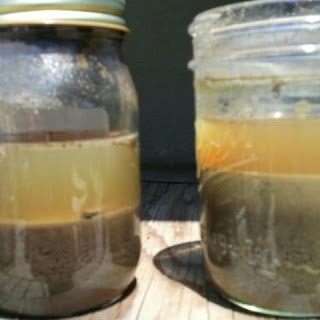It's no secret that Colorado gardener's have some tough soil to deal with! But don't let that slow you down, because our hardgoods experts give us several ways to test and amend your soil, to make a blissful home for your plants!
 Soil pH is one of the most important factors influencing your gardening success, because it affects the availability of nutrients to plants, as well as the microbial activity in your soil. No matter the quality of the fertilizer or supplement you apply, the plant can’t use it if the pH is too high. Soil pH is a measure of the acidity or alkalinity of a soil. On the pH scale, 7.0 is neutral, above 7 is alkaline, below 7 is acidic. Bleach for example is very alkaline. Lemon juice is very acidic. Most plants prefer a pH of between 6 and 7. Our soils are typically 7 or greater.
Soil pH is one of the most important factors influencing your gardening success, because it affects the availability of nutrients to plants, as well as the microbial activity in your soil. No matter the quality of the fertilizer or supplement you apply, the plant can’t use it if the pH is too high. Soil pH is a measure of the acidity or alkalinity of a soil. On the pH scale, 7.0 is neutral, above 7 is alkaline, below 7 is acidic. Bleach for example is very alkaline. Lemon juice is very acidic. Most plants prefer a pH of between 6 and 7. Our soils are typically 7 or greater.There are several ways to check your soil pH. Home test kits are a quick and relatively easy way to get a reading on pH. Soil test meters are an economical way to test pH. A meters lets you test your soil in multiple locations (yes, it can vary greatly across the garden), quickly and easily. Meters come either with a digital or an analog readout. You don’t have to mix anything and you can do the test as often as you like in a short period of time. There are also kits which utilize a capsule system to accomplish the test. You combine soil, water and a test capsule in the test tube provided, and then compare the color with the included chart to get the answer. You can buy test kits specifically for pH, or kits that include pH plus Nitrogen (N), Phosphorus (P) and Potassium (K).
Home test kits are easy and handy, but to get a more complete understanding of your soil, we recommend you get a soil test analysis from the laboratory at Colorado State University. You can get a mailer and test instructions in the Hardgoods section of the store. The mailer is free, but you do pay a fee to CSU for the test (around $30). You will receive a comprehensive analysis of your soil.
Here’s another quick test for you to determine the makeup of your soil. You need a mason jar, some dish soap and water. Put a cup of the soil you want to sample in the mason jar. Add 1-2 cups of water and ½ tsp of dish soap. Shake well and let it sit undisturbed for 24 hours. You’ll see that the soil has settled into layers. The first layer will be sand. The second layer will be silt and the third layer clay. Organic material will float to the top. Calculate the percentages by volume to see what your soil structure is made up of. For example, If you have equal parts sand and silt with a smaller layer of clay and some organic material floating on top, your soil would be 40% sand, 40% silt, 20% clay. Most of the time, you’re going to see a small amount of sand and silt and a large percentage of clay.
When you’re testing, bring the results in to the store. Depending on the outcome of your tests, we’ll be glad to make recommendations for products to help correct the problems you have.



No comments:
Post a Comment
Note: Only a member of this blog may post a comment.